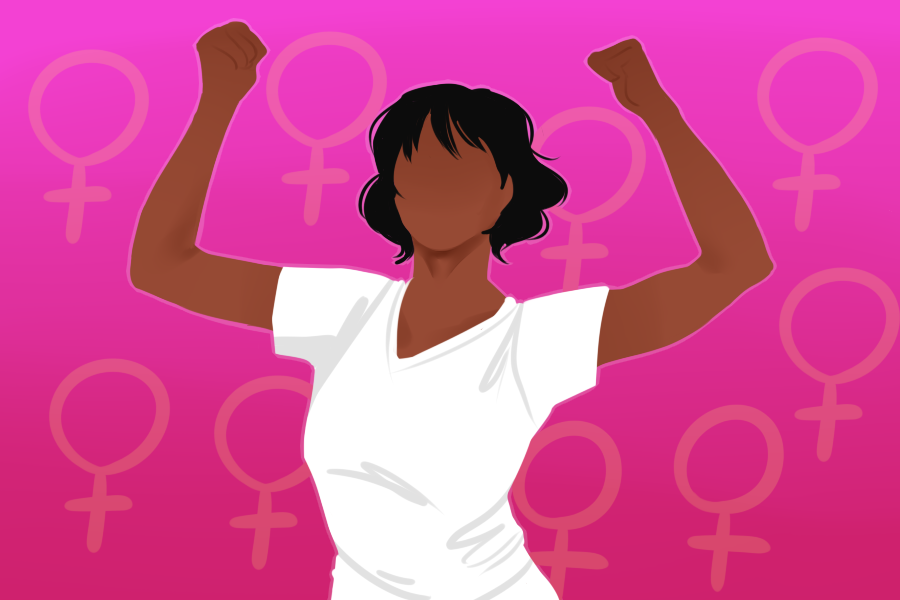
Students evaluate the sufficiency of women’s resources on campus
Women comprise 59 percent of UC Davis’ student body. With a demographic as substantial as this one, it is essential for the school to provide an ample amount of resources that are readily available and easily accessible to women. While the school does offer a wide range of women’s resources and services, including but not limited to those offered at the Women’s Resources and Research Center, many students feel that there is room for improvement.
Biana Giang, a second-year civil engineering major, believes the school has a bit of catching up to do when it comes to the amount of women’s resources available.
“The only [resource] that I’m aware of on campus is the WRRC in North Hall,” Giang said. “Other than that, I feel like there isn’t really anything else. There is always more that can be added.”
According to Giang, the school’s lack of attention in the advertising and promotion sector puts its existing resources at a slight disadvantage. Giang feels that, though the school offers certain resources for women, not enough students are aware of those resources.
“Other than what you get during orientation, or if you decide to take a class that will tell you about all the resources that are on campus, a lot of people aren’t aware of what [the school] does offer,” Giang said. “Having more advertisements or at least some more coverage on [existing resources] would definitely help.”
Mariana Huben, a fourth-year English and linguistics double major and editor-in-chief and campus correspondent for Her Campus at UC Davis, shared similar sentiments regarding the lack of campus efforts in publicizing women’s resources.
“As far as the resources go, [the school] is doing an amazing job,” Huben said. “It’s really just the promotion of those resources. And I think a big part of that is that [UC Davis] is just such a big school. You can only reach so many students through email. Only so many students actually check their emails regularly.”
Huben believes it’s the school’s duty to educate students on the resources that are available to them; failure to do so ultimately puts more responsibility on students to actively seek out the services and programs they need.
“I think you do have to seek out additional information a lot of the time,” Huben said. “There is a Society for Women Engineers if you’re in STEM and you want that cohort of just women, and if you’re into business there is Davis Women in Business and you can join that club. But you do have to step a bit outside of your comfort zone to get that information.”
Mirka Dirzo, second-year psychology and Chicanx studies double major, agrees that more can be done in order to ensure that women’s campus resources are up to par. Dirzo especially emphasizes the need for better accessibility for women seeking out these resources, especially considering the fact that most UC Davis students come from diverse socioeconomic backgrounds.
“I do know that there’s a Plan-B vending machine in the ARC, but there are women [who come] from low-income households who can’t afford it,” Dirzo said. “Even if [certain resources] are available, it’s still a hassle to get them. It would be a lot more helpful to make [these resources] more accessible.”
Accessibility seems to be a crucial problem for many UC Davis students seeking campus resources. Angela Kim, fourth-year gender, sexuality and women’s studies and American studies double major and community organizer for the WRRC, also believes that the ease at which students can access their desired resources can definitely be improved upon.
“There are a lot of resources on campus, but I think it’s more of a matter of awareness and access […] and making these abundant resources that we have on campus more accessible,” Kim said. “If you think about it, when a student is in distress or [in a] crisis, they might not always have the resources right at hand.”
The WRRC, one of the more widely known resource centers on campus, provides an open space and open resources for individuals from all different communities to utilize. Many students are, however, reluctant to take the additional steps to obtain the resources they need because they don’t feel comfortable doing so.
“We at the WRRC are a service that offers so much gender and sex education,” Kim said, “[…] but people don’t take the initiative to reach out to us. It gets difficult when the UC Davis community is not doing [its] part to become more aware and more conscious.”
Kim stressed the importance of engaging in conversations that bring awareness to stigmatized topics, topics like HIV testing or the utilization of gender-neutral bathrooms, in order to destroy preconceived notions surrounding them. According to Kim, the negative connotations surrounding these topics prevent many resources offered on campus from being fully utilized.
“I think we can do a lot more to have conversations […] about things people might normally be uncomfortable with,” Kim said. “I think it’s a matter of being engaged with the community and coming to these different [resource] centers and educating yourself more about them.”
Written by: Emily Nguyen — features@theaggie.org



